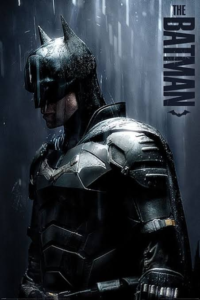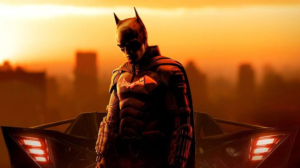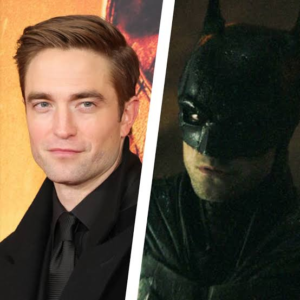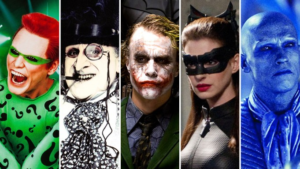Within the vast realm of superhero history, one iconic figure stands out and casts a long shadow over the world of comics and movies: Batman.
From the rough streets of Gotham City to the silver screen, Batman’s journey is a compelling story that spans decades.

Delve into the exciting history of the Batman series, exploring its development, its influences, and the mysterious vigilante behind the covers.
1. The Genesis of the Dark Knight
Batman’s origin story is the basis of his character. Created by Bob Kane and Bill Finger, the Caped Crusader made his debut in 1939’s Detective Comics #27.

After witnessing the murder of his parents, Bruce Wayne, a billionaire orphan, dons a cloak and hood and transforms into the fearsome force for justice we know today. .
2. Golden Age Glory

The Golden Age of Comics marked the emergence of Batman as a cultural phenomenon.
The character has evolved from a noir detective to a costumed crime fighter who navigates a world filled with colorful villains.
Batman’s popularity quickly grew, and in 1940 his standalone comic book series was published.
3. Dynamic Duo: Batman and Robin
Enter the iconic partnership of Batman and Robin. The introduction of the Boy Wonder, Dick Grayson, infused the comics with youthful energy.
The Dynamic Duo became inseparable, facing off against a rogues’ gallery that would become legendary in its own right.
4. The Dark Knight Rises
Batman’s origin story is a cornerstone of his character. Created by Bob Kane and Bill Finger, the Caped Crusader made his debut in Detective Comics #27 in 1939.
Bruce wayne, a billionaire orphan, donned the cape and cowl after witnessing his parents’ murder, transforming into the formidable force for justice we know today..
5. The Bronze Age and Beyond

Batman’s narrative took a darker turn in the Bronze Age, reflecting societal shifts. The introduction of characters like Ra’s al Ghul and the League of Assassins added layers of complexity to Batman’s world.
Frank Miller’s “The Dark Knight Returns” in the 1980s redefined the character, inspiring a grittier, mature tone.
6. Cinematic Ascent: Batman on the Big Screen
Tim Burton’s 1989 film brought Batman to movie theaters with a visually stunning and atmospheric depiction.
This marked the beginning of Batman’s cinematic legacy, with later directors putting their own spin on the character, from Christopher Nolan’s grounded realism to Zack Snyder’s dark vision.
7. Animated Excellence: Batman in Cartoons

The Caped Crusader transcended comics and film, making a significant impact in animated series.
“Batman: The Animated Series” in the 1990s stands as a pinnacle of animation, capturing the essence of the Dark Knight’s world and garnering critical acclaim.
8. Arkham Asylum and Video Game Triumphs
The Batman series was also expanded into video games with the acclaimed Arkham series.
These games allowed players to step into Batman’s shoes and experience Gotham City like never before, cementing Batman’s status as a gaming icon.
9. Rebirth and Modern Dynamics
DC’s “Rebirth” initiative revitalized Batman comics, blending nostalgia with innovative storytelling.
Bruce Wayne faced new challenges, and diverse characters took up the mantle, contributing to the character’s ever-evolving legacy.

10. The Enduring Legacy
Looking back at Batman’s story, we see that the Dark Knight’s journey is far from over. From comics to movies, television shows to video games, Batman’s influence endures and captivates audiences across generations.
Conclusion:
Batman’s series history is a tapestry woven with complexity, rich storytelling, and an enduring legacy. As we continue to witness the evolution of the Dark Knight, one thing remains certain – Batman will forever be a symbol of justice, darkness, and the indomitable human spirit.
FAQs:
Q: Who created Batman?
A: Batman was co-created by artist Bob Kane and writer Bill Finger.
Q: How did Batman’s character change during the Golden Age?
A: Initially a noir detective, Batman transformed into a costumed crime-fighter during the Golden Age, embracing a more superheroic identity.
Q: What is the significance of “The Dark Knight Returns”?
A: Frank Miller’s graphic novel “The Dark Knight Returns” redefined Batman in the 1980s, influencing a grittier and more mature direction for the character.
Q: Which actor first portrayed Batman in a live-action film?
A: Adam West was the first actor to portray Batman in a live-action film with the 1966 “Batman: The Movie.”
Q: How has Batman’s legacy extended into video games?
A: The “Arkham” series of video games is widely praised for its immersive gameplay and storytelling, allowing players to experience Batman’s world in a unique way.